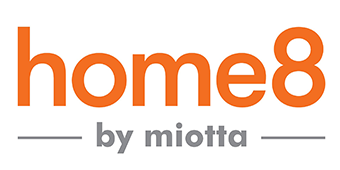News Source: Gear Diary, http://www.connectedhome.com.au/blogpost/ageing-in-place-blending-technology-with-privacy/
BY: Jorge Perdomo October 12, 2017
Without question, the technology surrounding independent living – particularly for seniors – has advanced at an astounding rate. And the range of devices designed to achieve this overarching objective is growing exponentially. For example, there are:
Sensors to monitor their movements within the home, to ensure seniors are navigating their surroundings safely.
Fall detectors that will activate when someone experiences a fall, alerting the proper caregiver, family member or emergency responder so proper action can be taken.
Medication adherence alert systems to confirm that elders are taking their medicine and doing so in the proper dosage.
GPS Trackers that help keep seniors with Alzheimer’s or other forms of dementia within a certain area, guarding against the dangers associated with wandering.
And the list goes on. Clearly, the technology exists to protect our seniors and allow them to take full advantage of the trend towards ‘ageing in place’ – that is, living as long as possible in their own homes both independently and safely. However, while these devices are reaching amazing levels of functionality, there is another consideration that is sometimes overlooked, not only in the design of the devices themselves but in elders’ attitudes towards them.
One might refer to it as the ‘Big Brother’ effect. Many seniors are fully aware that they need some extra assistance to allow them to remain at home but they don’t want to be reminded of this fact on a daily basis. They don’t want to be aware of the sensor that is watching their movements. Nor do they want to see the refrigerator sensor placed strategically on the door to ensure they are eating properly. Consequently, two essential issues must be taken into account when designing these devices:
They must be as unobtrusive as possible from a physical perspective. In other words, they need to be designed so that the senior barely notices them, whether that means they are small or they blend in seamlessly with the overall home décor.
They must require as little interaction on the part of the senior as possible, not only to keep the senior from being reminded that the devices exist but for ultimate convenience and safety (i.e., the less the senior has to do in an emergency, the better).
What does this all mean? It means cameras that are not only small but that can be placed easily in corners of the house out of the normal visual range of the senior. It means wearables that are as lightweight as possible and look more like jewelry than monitoring devices. It means devices that require little to no action to be taken by the senior in case of an event. This trend is already evidenced in the general area of smart-home devices, as cameras, sensors and other connected gadgets were designed to not only be smaller and less obtrusive but, where size couldn’t be reduced, to be more aesthetically pleasing. This same approach needs to be fully incorporated into the ageing in place arena as well.
Home8care, a collaborative care system that help seniors live independently and uses the Mivatek platform as its foundation, takes these concerns very seriously. The system offers a mini-camera that is just 1.85” wide and 3.54” tall in order to make it as unobtrusive as possible, almost invisible. Seniors can wear the Fall Detector around their wrist or as a pendant and barely notice it’s there. Tracking devices can be placed wherever necessary and virtually forgotten. And in virtually all cases, the senior does not need to do anything in case of an emergency event. Therefore, privacy is maintained and the seniors’ involvement is minimal – all of which are integral to the senior’s comfort level with these products.
As even more sophisticated technologies came into play, the issues of privacy and unobtrusiveness will remain important elements. An article in the National Institute on Aging, titled NIH initiative tests in-home technology to help older adults age in place, details the effort by academic and industry experts to develop and test unobtrusive tools that record and track real-time changes in older adults’ health status and activities.
“Ideally, the technology needs to be non-intrusive, tuned to specific living situations to provide highly valued data. For example, for people living alone, strategically placed motion sensors on the ceiling allow researchers to track participants’ gait speed (a predictor of vitality), cognitive decline, and mortality, without invading their privacy,” says Dr. Jeffrey Kaye, M.D., who is leading the initiative.



Get Social